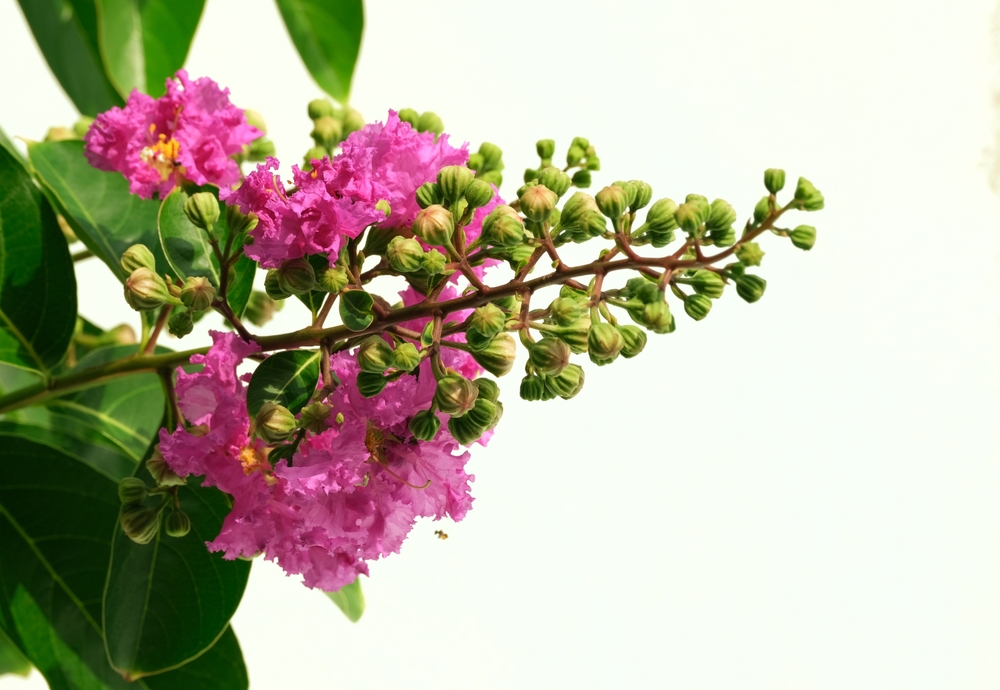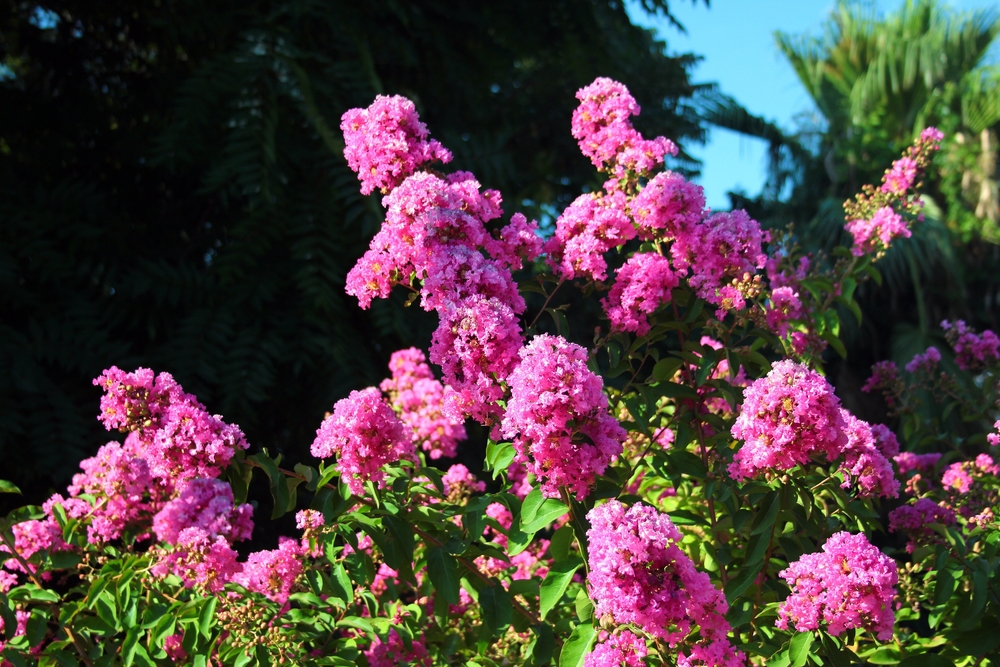The Muskogee crape myrtle is a beautiful, tough, and easy-to-grow tree that provides showy blooms in summer and stunning fall color. It’s also one of the most popular trees for landscaping in the southern United States. If you’re thinking about taking care of a Muskogee crape myrtle, you need to be able to understand how to care for it properly.
To ensure your tree grows healthy and strong, here are some of the most important things you need to know about Muskogee crape myrtle care:
| Botanical Name | Lagerstroemia Indica ‘Muskogee’ |
| Common Name | Muskogee Crape Myrtle |
| Plant Type | Perennial |
| Flower Color | Purple |
| Size When Mature | 240 – 360 inches in height |
| Bloom Time | Summer |
| Sun Requirements | Full to Partial Sun |
| USDA Hardiness Zones | 6 – 9 |
| Soil PH Range | 6.0 – 6.5 |
| Soil Type |
Slightly Acidic, Neutral, Well-draining |
| Water Needs | Low to Medium |
| Native Area | Korea and China |
What You Need to Know About Muskogee Crape Myrtle
The Muskogee Crape Myrtle is a deciduous tree that is known for its beautiful, showy blooms that appear in summer. The tree can grow to be up to 20-30 feet tall, with a spread of 15-25 feet. The Muskogee crape myrtle is a popular choice for landscaping in the southern United States because it is tough and easy to grow. Aside from being resilient to drought, this tough tree doesn’t require much maintenance and is fairly resistant to most diseases.
The tree leaves are large, thick, and slightly waxy to touch. They also have a deep green color with a purple hue and a smooth surface with serrated edges. Moreover, its leaves are arranged alternately on the stems and are attached to the branches by short petioles. In the fall, the leaves of the Muskogee crape myrtle change color to a deep red or purple, providing an attractive contrast to the green of the branches.
The tree’s flowers are small and petite, with five delicate petals in purple color. They are borne in clusters at the ends of the branches and bloom all throughout summer. The flowers are followed by small fruits that turn from green to black as they mature. Birds and other small animals eat the fruits, contributing to the tree’s spread.
How to Care for Muskogee Crape Myrtle
Here’s everything you need to know about growing and caring for a thriving Muskogee Crape Myrtle:
Light
When caring for a Muskogee Crape Myrtle, giving it the right amount of light is important. The Muskogee crape myrtle prefers full sun, so choose a spot in your yard that gets six to eight hours of direct sunlight each day. If you live in an area with scorching sun, you may want to provide some afternoon shade to prevent the leaves from burning.
Water and Soil Needs
Water is essential for all plants, and Muskogee Crape Myrtle is no exception. During the summer months, a weekly watering is usually sufficient to keep the tree healthy. However, be sure not to over-water, as this can cause root rot. In the winter, you can reduce watering to once every two weeks.
When it comes to soil, the tree thrives in well-drained soil with a pH of 6.0 to 7.5. Using chalk, clay, loam, or sand, you can create the perfect soil mix for your tree. Amend the planting hole with compost or other organic matter to help the plant’s roots establish quickly. Additionally, the tree is tolerant of drought and salt, making it an ideal choice for homeowners who want a low-maintenance landscape.
Temperature Requirements
The temperature requirements are one of the most important things to keep in mind when caring for Muskogee Crape Myrtle. Being hardy in USDA zones 6-9, the tree prefers warm weather and will not do well if exposed to prolonged periods of cold.
During the winter months, it is important to provide the tree with a location with good drainage and wind protection. Additionally, mulching around the base of the tree can help to insulate its roots and prevent them from being damaged by the cold.
Fertilizer
The best fertilizer to use on a Muskogee Crape Myrtle is a slow-releasing fertilizer, ideally, one that’s high in nitrogen. In some instances, a balanced fertilizer might work too. If in doubt, test your soil to see what nutrients it’s lacking before adding any fertilizer.
As for the fertilization schedule, it’s best to fertilize your tree three times a year: once in the spring, once in the summer, and once in the fall.
Getting a fertilizer with high nitrogen content will promote growth, help the tree to recover from any damage, and keep its leaves healthy and green. However, too much nitrogen can cause the tree to produce excessive foliage at the expense of flowers, always bear that in mind.
Common Diseases
Unfortunately, even if this tree is mostly disease-resistant, it can still catch some diseases. The most common ones are powdery mildew, blackspot, and leaf spot. These diseases can cause the leaves of the tree to turn yellow or brown and fall off prematurely.
To prevent these diseases from taking hold, it is important to water the tree regularly and apply a fungicide according to the manufacturer’s instructions. In addition, it is important to prune away any diseased leaves or branches as soon as possible.
The tree is also susceptible to pests, such as aphids and scale insects. Controlling these pests can be difficult, so it is important to take preventive measures, such as using organic pesticides and keeping the tree healthy.
Muskogee Crape Myrtle Propagation
Muskogee Crape Myrtles can be propagated from both seeds and cuttings. With a little patience, it is possible to create a miniature version of this striking tree.
Simply sow the seeds in a pot filled with moist sand or peat moss to propagate from the seed. Keep the pot in a warm, sunny place, and water regularly to prevent the sand from drying out. Once the seedlings emerge, transplant them into individual pots filled with rich potting soil. For best results, grafting onto an existing rootstock is generally recommended. However, with careful nurturing, it is possible to produce a healthy tree from seed alone.
Cuttings can also be taken from an existing tree and rooted in potting soil or sand. The cutting should be taken from new growth that is just beginning to harden off, and it should be allowed to callous over for a few days before being planted. Once again, warmth and regular watering are essential for successful rooting. With a little time and effort, it is possible to create a beautiful Muskogee Crape Myrtle of your own.


